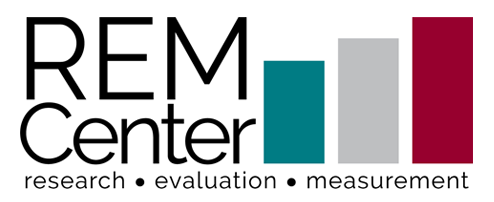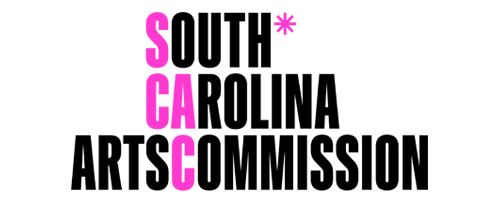Task Details
Drawing and Refining a Landscape
In this task, students will demonstrate their ability to create a piece of art using specific visual arts
vocabulary and to revise their artwork based on teacher feedback. Students should be familiar
with creating drawings using pencils and revising their art based on feedback. The teacher will
assess each student’s individual proficiency by evaluating both their revised artwork and their
response to suggested feedback. The task may take place during two or more class periods.
This page contains an 'at a glance' overview of this task, downloadable teacher guide and student booklet documents, and the task rubric with student work samples and rating justifications for each proficiency level in the Elements of Art dimension and the Use of Principles in Overall Appearance dimension. Student work samples for the Revision/Response to Feedback dimension will be added at a later date.
Content Area, Artistic Process, & Anchor Standard
| Visual Arts | ||
| Artistic Process | Creating | |
| Anchor Standard 1 | I can use the elements and principles of art to create artwork. | |
Targeted Grade Level(s)
- Upper Elementary
- Middle School
Documents
Classroom Piloting Status
- Piloting in Progress
Supplemental Materials
- Student Booklet
Directions, drawing areas, feedback page, written reflection, and rubric
Rubric and Sample Student Work
| ELEMENTS AND PRINCIPLES OF ART | |||
| Proficiency Level | Description | Sample Student Work | Justification |
|---|---|---|---|
| Exemplary |
|
Exemplary Sample |
The drawing contains a variety of details, textures, overlapping lines, and shapes that create visual interest. Value and overlapping shapes create depth.
This sample illustrates that students may demonstrate different proficiencies across rubric dimensions. The drawing is exemplary in the elements of art dimension and proficient in the use of principles dimension. |
| Proficient |
|
Proficient Sample |
The drawing includes value, details, textural variety, overlapping shapes, and some variety in lines.
This sample illustrates that students may demonstrate different proficiencies across rubric dimensions. The drawing is proficient in the elements of art dimension and exemplary in the use of principles dimension. |
| Approaching Proficient |
|
Approaching Proficient Sample |
The drawing includes few details and textures. There are many overlapping elements that do not enhance the space. The building is dwarfed by the mountains.
This sample represents a student who demonstrated an approaching proficient proficiency level in the elements of art and use of principles dimensions. |
| Emerging |
|
Emerging Sample |
There are details and variety in the drawing, but they do not provide visual interest. There is no real sense of depth because the trees in the middle ground seem smaller than those in the background. Overlapping shapes and lines are not utilized. |
| Needs Major Support | The drawing does not include the elements of art and/or is incomplete. |
Needs Major Support Sample |
The drawing is a cityscape, rather than a landscape, and does not address the task. |
| OVERALL COMPOSITION | |||
| Proficiency Level | Description | Sample Student Work | Justification |
| Exemplary |
|
Exemplary Sample |
The drawing is balanced, and it has a unified composition with distinction between foreground, middle ground, and background. The craftsmanship is intentional.
This sample illustrates that students may demonstrate different proficiencies across rubric dimensions. The drawing is proficient in the elements of art dimension and exemplary in the use of principles dimension. |
| Proficient |
|
Proficient Sample |
The drawing is a unified, balanced composition that is neat and demonstrates craftsmanship. Changes in proportion are not demonstrated.
This sample illustrates that students may demonstrate different proficiencies across rubric dimensions. The drawing is exemplary in the elements of art dimension and proficient in the use of principles dimension. |
| Approaching Proficient |
|
Approaching Proficient Sample 1 Approaching Proficient Sample 2 |
Sample 1 The drawing fills the space and is somewhat unified because of the abundance of mountains. There is little foreground and some use of proportion to create depth. It is neat, but it shows a minimal level of craftsmanship. This sample represents a student who demonstrated an approaching proficient proficiency level in the elements of art and use of principles dimensions. Sample 2 The drawing is neat, displaying some sense of craftsmanship in the details, but there is minimal distinction between foreground, middle ground, and background and no use of proportion. |
| Emerging |
|
Emerging Sample |
Although the drawing shows some attempt at foreground and background, those principles are not distinct. There is no use of proportion or perspective. The drawing is neat but displays minimal craftsmanship. |
| Needs Major Support | The drawing demonstrates no craftsmanship and/or is incomplete. |
Needs Major Support Sample |
The drawing is a cityscape, rather than a landscape, and does not address the task. |
| REVISION/RESPONSE TO FEEDBACK | |||
| Proficiency Level | Description | Sample Student Work | Justification |
| Exemplary |
|
Student work samples coming soon! | |
| Proficient |
|
Student work samples coming soon! | |
| Approaching Proficient |
|
Student work samples coming soon! | |
| Emerging |
|
Student work samples coming soon! | |
| Needs Major Support | The student did not revise the drawing and/or address feedback. |
Student work samples coming soon! | |





